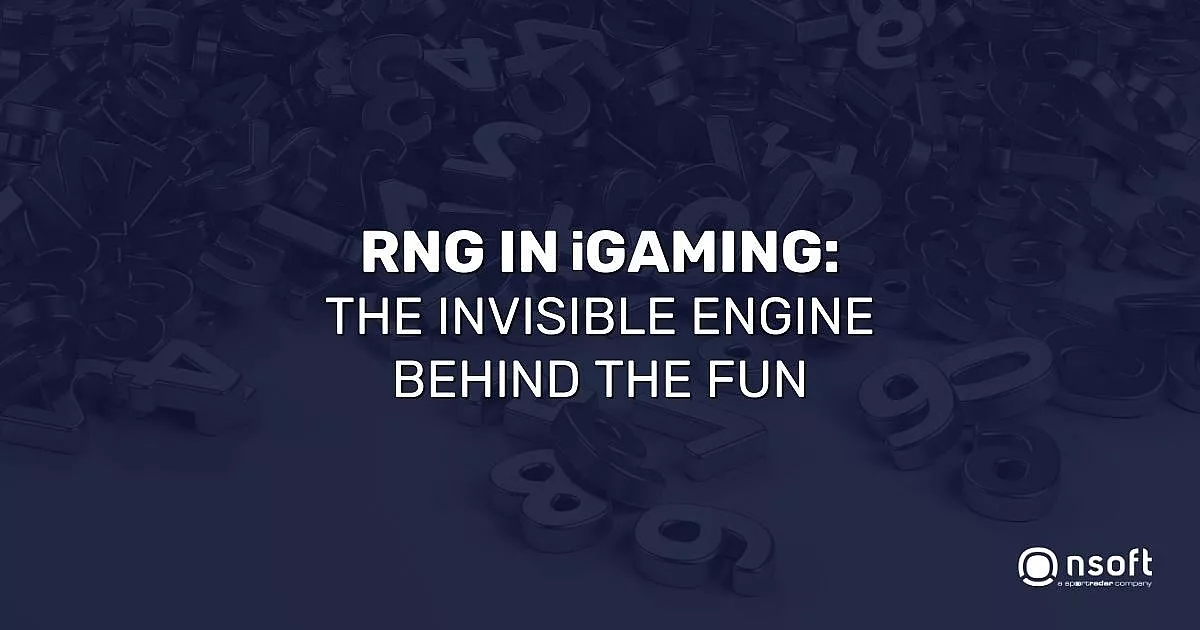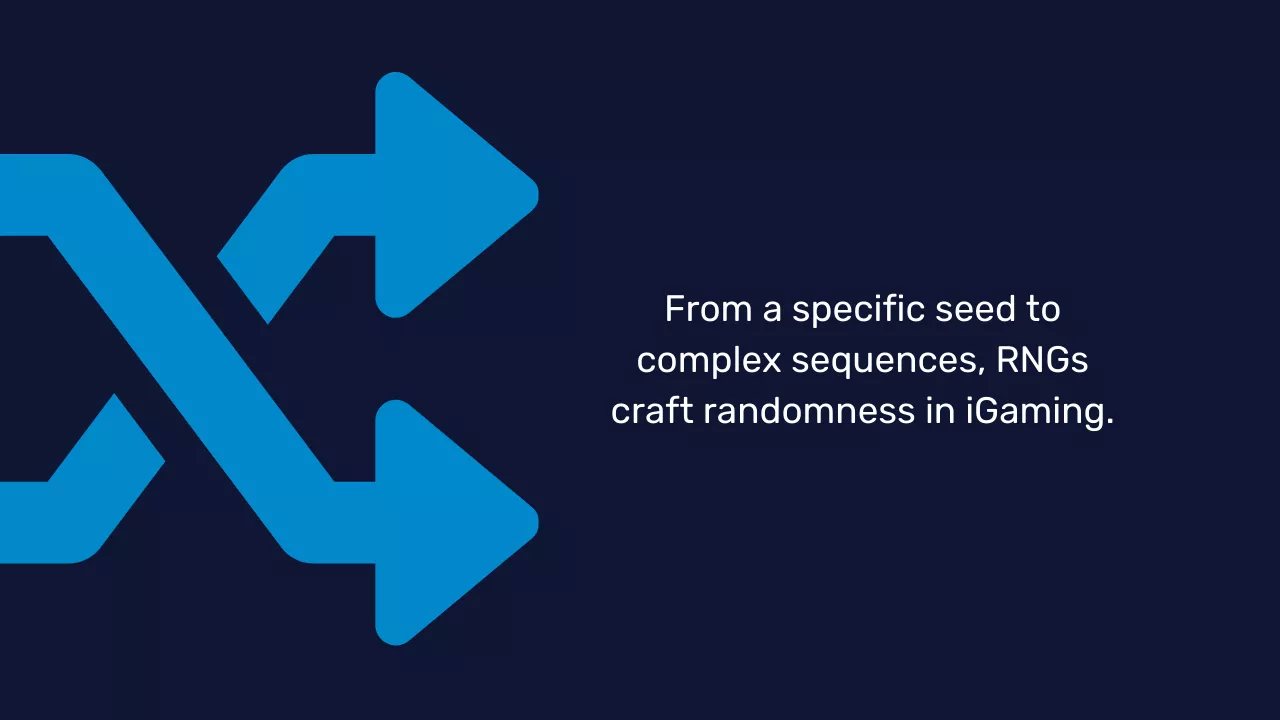Interviews & Editorials
Here's Your Crash Course on the Core of iGaming - RNG!

In simple terms, an RNG is a system that generates random numbers. In the RNG family, there are mainly two types: TRNGs and PRNGs. TRNGs, or True Random Number Generators, are hardware that collect data from a physical processes, such as atmospheric noise, and convert it into values to produce genuinely random outputs.
But in the iGaming world, we mostly deal with software-based PRNGs, or Pseudorandom Number Generators. They use complex math to mimic randomness, and determine everything from which symbols appear on an online slot reel to the cards you're dealt in online poker. So let’s take a closer look at these nifty little systems.
How Do PRNGs Actually Work? #

Picture an online slot game with 5 reels, each with 10 symbols. When you hit 'spin', the RNG kicks in and generates a random number for each reel. These numbers correspond to the symbols on the reels. The combination of symbols that appears when the reels stop spinning is determined by these RNG-generated numbers. So how does it work? Let’s break it down.
Starting Point: The Seed #
First things first, RNGs begin with a seed number which is essential for generating randomness. This isn't just a random pick; it's usually something incredibly specific, like the exact millisecond on your system clock. That seed is crucial because it’s the starting point for the whole random sequence.
Enter the Algorithm #
Next, this seed is fed into an algorithm – a fancy word for a mathematical formula. Common algorithms include the Mersenne Twister and Linear Congruential Generator (LCG). These aren’t simple additions or subtractions but complex formulas that scramble the seed into a new number that seems totally unrelated.
A simplified example: Let’s create a pseudorandom number with a basic LCG method. We start with a seed number, like 12345. In our LCG, we use a multiplier (1664525), add an increment (1013904223), and apply a modulus (2³²) to keep the result in check. Using the formula Xn+1 =(aX n +c) mod m, with our seed and these numbers, we get our first pseudorandom number: 87628868. It's a simple example, but it captures the essence of how an LCG creates a sequence of numbers that appears random.
One Becomes Many: Sequences #
But the story doesn't end with one number. This new number becomes the seed for the next round of calculations, and so on. It's a domino effect, where one number leads to the next. The initial unpredictability of the seed, combined with the complexity of the calculations, creates a sequence that appears entirely random.
But RNGs aren't just a one-trick pony. They vary based on the game, from slots to card games to virtual sports. This versatility is key in designing games that are not only fair but also fun and engaging.
Testing for Fairness #

Now, these algorithms aren't foolproof. They're 'pseudo-random,' remember? That's why we wrap these RNGs in layers of security and put them through tests like the Chi-Squared or Marsaglia's "diehard" tests. It's essentially quality control, making sure the randomness engine of our games can't be manipulated.
Once an RNG passes these tests, it needs official certification. Bodies like eCOGRA or iTech Labs review the RNGs against industry standards. Passing this review earns a certificate – a badge of honor, if you will, that declares our RNGs legit and up to standard. But it doesn't stop there; regular audits are a must to maintain this certification and ensure our games stay fair and law-compliant.
Why This Matters in iGaming #
So, why do we, as iGaming providers, care so much about RNGs? Well, it boils down to two things: trust and fairness. RNGs work tirelessly behind the scenes and are rigorously tested to ensure no one can predict or manipulate the outcomes of our games.
But RNGs aren't just about randomizing results; they also shape how we design our crowd-favorite games like Lucky Six. Every single game has its unique RNG twist, influencing player experiences and making each playthrough fresh. It's a tricky task to mix randomness with fun, but that's what keeps things interesting.
In short, RNGs may be out of sight, but they're certainly not out of the game. More than just mathematical constructs, they're a core component of the iGaming industry - the guardians of trust, fun, and the thrill of the unknown that makes gaming an exciting experience.
Tags:
Related Articles
Interviews & Editorials
22.02.2024.
The Insider's Guide to RTP: Everything You Need to Ace Betting Economics!
Learn what RTP (Return to Player) means, why it's important for player engagement and operator success, and how understanding it can change your business strategy for the better.
Learn more
Interviews & Editorials
07.02.2024.
The Most Popular Roulette Strategies & Their Business Implications
The business behind roulette strategies: see how tactics from Fibonacci to Andrucci shape player engagement, game design, and operator margins in the iGaming landscape.
Learn more
Interviews & Editorials
07.02.2024.
Everything You Need to Know About Provably Fair Technology
Discover how Provably Fair technology uses cryptography to guarantee the integrity of each game outcome, with a comprehensive guide on how it works, its advantages, and its impact on players and game developers alike.
Learn more
Didn’t Find What You’re Looking For?
Our team will be happy to guide you through our products and services.
Contact us

